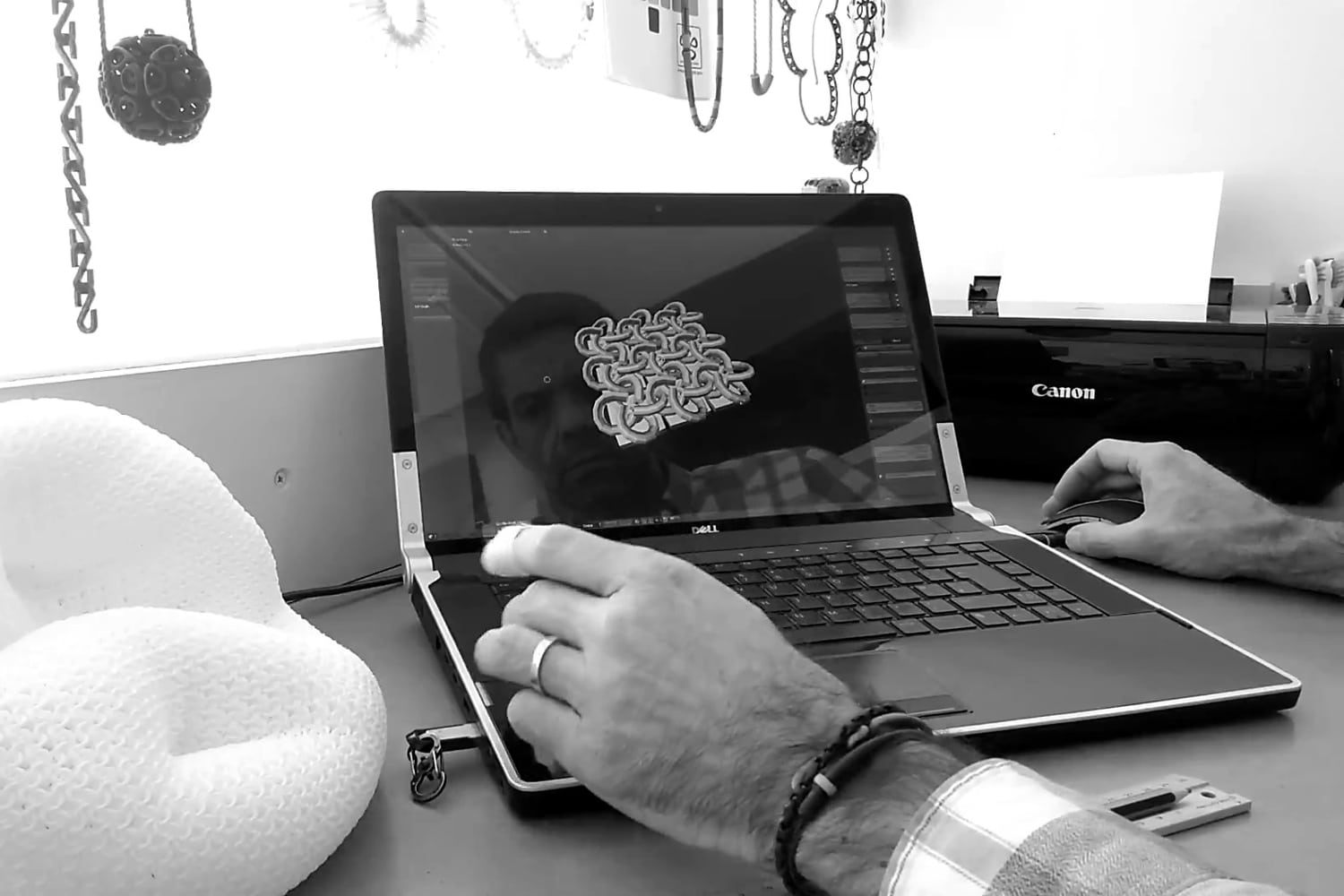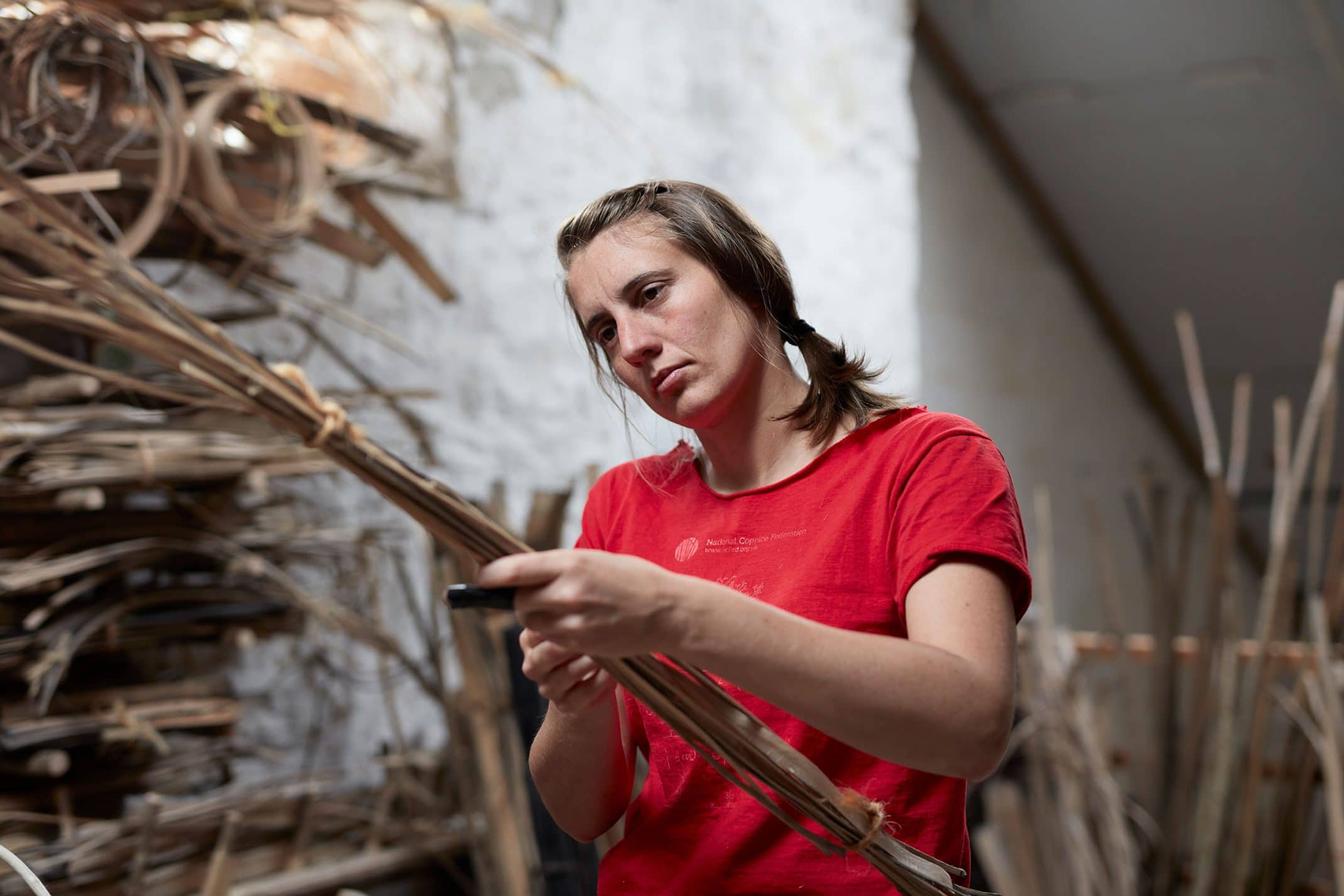
Jewellery designer and Royal College of Art graduate Mark Bloomfield is a digital craftsman based at London’s iconic Oxo Tower Wharf.
As a leader in his field, using traditional craftsmanship techniques, digital tools and manufacturing technologies, he continues to dissolve boundaries and redefine the process of making through his exploration of the possibilities offered by current and emerging manufacturing technologies. Mark has designed for some of the most influential and prominent designers, including Asprey, Vivienne Westwood, Paul Smith and Matthew Williamson. Additionally, he has worked in film and TV making jewellery for Titanic, Judge Dredd, Gentleman Jack and Tolkien. His work creatively combines traditional craft techniques with advanced digital processes resulting in product that is engaging, surprising, thought provoking and sparks conversation. We caught up with Mark to find out more about his work and process.
Did you always know that you wanted to be a designer?
No, I discovered design through making. As a kid I was always making things and that’s what got me started. Looking back I don’t recall knowing what a designer was but I soon learnt that if you want to design things, you also need to know how to make them.
How did your modular jewellery collection come about?
I worked for a fashion jewellery company as Head of Design and discovered how important it was for everyone to be involved, whether that was commercially, technically or aesthetically. When designing you have to consider a wide range of aspects that all impact on the item you’re creating, but once it’s made it cannot be changed. When I then set up my studio at Oxo Tower Wharf I was inspired by new manufacturing processes like 3D Printing which would allow me to develop my own jewellery collection in a completely different way. All of the 3D Printed parts or modules can be put together in a variety of different ways to create different items of jewellery. This gives me great flexibility as I can not only constantly change the jewellery, but customers can also. This means the jewellery can be personalised according to what the customer wants and often means they are getting a one of a kind piece that’s unique to them.

What does sustainability mean to you?
Sustainability is all about maintaining a balance, whether that’s a work/life balance or a environmental balance. We’re all becoming more aware of how our choices impact natural resources and the consequences of not changing our behaviour. All businesses need to address their impact but customers are in an ideal position to tip the balance to a more sustainable future just through the choices they make.
Talk a bit about some of the processes you use.
I like to use a range of processes, sometimes I’m working in CAD on the computer, sometimes I’m at the bench making a quick model and I also sketch as it’s still the fastest way to test an idea. I try not to limit my process to one particular method and I’m always trying new things. I use industrial 3D Printers to manufacture the parts for my jewellery collection, but that also involves hand processes to get the finish just right, it’s not as simple as pressing a button! I love playing with materials so I’m also experimenting with smaller desktop 3D printers, recycling plastics, recycling my own jewellery collection and I’m about to start looking into recycling paper and cardboard.


Do you believe that making by hand is more important than ever? And why?
The best thing about making by hand is the deep connection you develop with materials. Having that connection, usually through tools, gives the maker a way of seeing the world that connects them to reality in a way that is constantly evolving and changing. This is often reflected in the work that they make which allows others to participate and discover something new about themselves and the world around them.
Who or what inspires you?
Everything and everyone! It can be a bit distracting so I try to focus on flora and fauna, and plants are full of wonder, magic and surprise.
What is the most challenging part of running your own business?
It’s the constant need to adapt and change. I design and sell my own range of jewellery but that’s not all I do. I also work on films making jewellery and props, I teach design and making, I’m involved in technology research, I design and manufacture for other customers, I’m writing, I’ve invented a 3D Printed textile and I also give presentations and talks at trade fairs and events. Trying to keep all this moving forward is a challenge, but I don’t think I’d be doing what I do if it was easy, I enjoy the challenge!
What is your workspace like?
I love my Studio at Oxo Tower Wharf and feel very lucky to be there, it’s like a second home! The spaces were originally set up to allow designer makers a space to make and sell their work, so I’ve tried to maintain that philosophy. It’s small but half of the space is designated to a showroom and selling space, and the rest is workshop space. When customers come to visit they are intrigued by the set up and I enjoy talking to them about my work, as well as being able to show them how the jewellery is made, it’s always interesting and rewarding. I think Oxo Tower Wharf is unique in that way, as all the studios are run by the artists and designers that actually make the work. Some people are looking for a more engaging and rewarding experience, and here you can discover more than you would in a regular high street shop.
What advice would you give to someone starting out in the industry?
Do what you love, it makes it easier when things get challenging!
What’s the best advice you’ve ever been given?
To be yourself!
Electrobloom can be found at Oxo Tower Wharf (2.11 second floor Courtyard, Oxo Tower Wharf, Bargehouse Street, South Bank, London SE1 9PH) as well as on his website.








